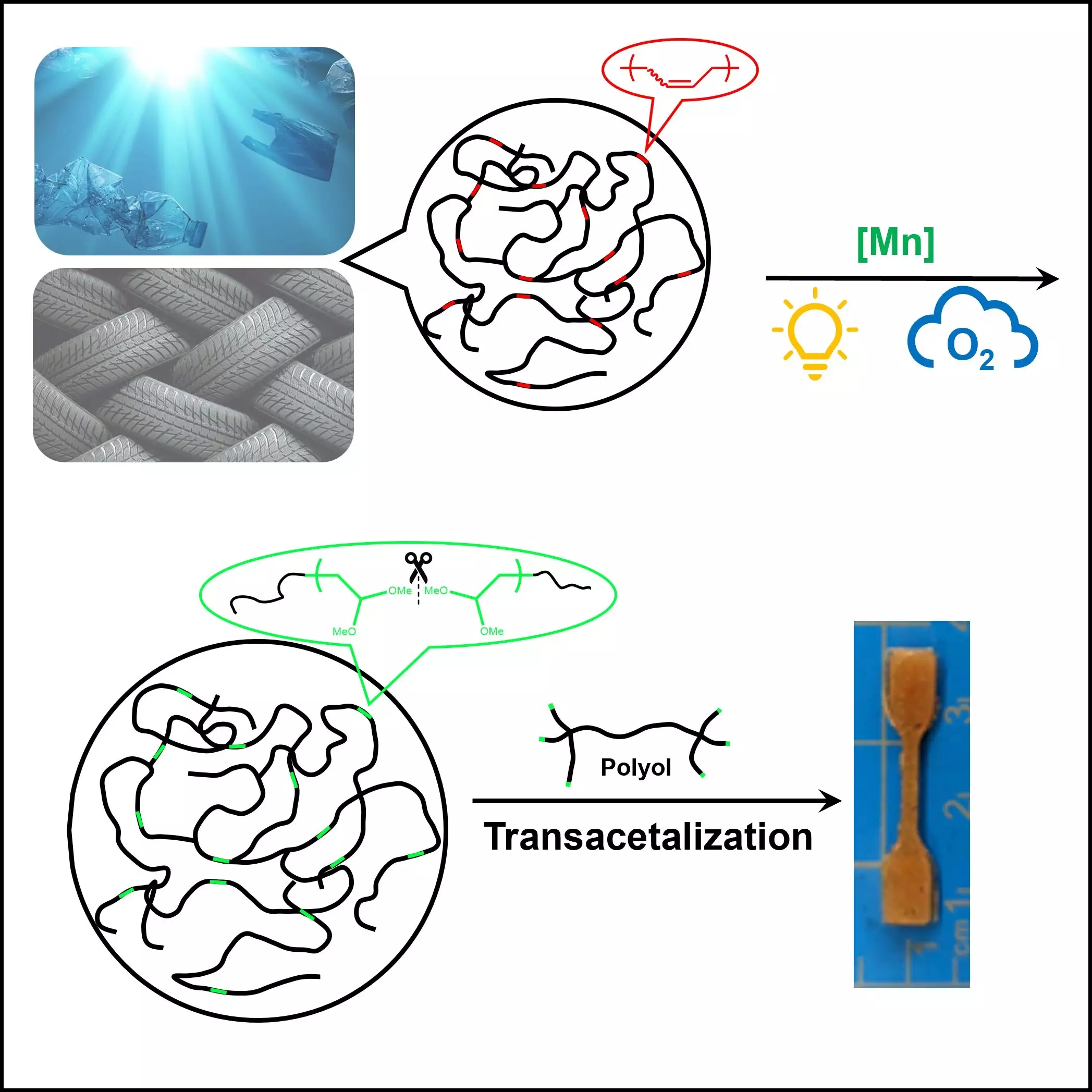The alarming accumulation of plastic waste since the mass production era of the 1950s has reached a staggering 8.3 billion metric tons. This figure highlights a grim reality: the vast majority of these synthetic materials have either been discarded irresponsibly or incinerated, severely contaminating our natural environment. The fact that only around 600 million tons have been recycled underscores this crisis, necessitating innovative solutions. The only way forward is not merely a reduction in plastic use but a profound restructuring of our recycling systems.
Breaking Down Barriers: The Pursuit of Sustainable Practices
Traditional recycling methods for polymers, especially polyolefins—which make up over 50% of global plastic production—face significant hurdles due to their stable hydrocarbon structures. Conventional practices, including ozonolysis and permanganate oxidations, while occasionally effective, consume enormous energy and often lead to hazardous by-products that contradict our sustainability goals. This glaring discord between current disposal methods and ecological responsibility illuminates the urgent need for a new paradigm in polymer recycling.
A Game Changer: The Role of Light and Oxygen
In this context, the groundbreaking study led by Dr. Junpeng Wang and his team at The University of Akron presents a beacon of hope. By harnessing the natural powers of oxygen and light, the researchers have devised a novel method to recycle unsaturated polymers. Their work not only elucidates the complexities of polymer degradation but does so in a manner that is both practical and scalable. Using a catalyst activated by light, this method successfully facilitates the breakdown of these resilient materials at room temperature, a stark contrast to traditional, energy-intensive approaches.
Implications for Environmental Sustainability
The implications of this research extend beyond the lab—addressing a significant aspect of environmental sustainability. The approach is not just a technical marvel; it signifies a shift in how we view plastics and our responsibility towards them. By introducing unsaturation to enhance reactivity, the research team has rekindled our ability to repurpose materials traditionally viewed as waste, effectively turning yesterday’s pollution into tomorrow’s resources. This transformation is crucial, as it aligns with global efforts to decrease landfill waste and combat pollution.
Looking to the Future: The Promise of Advanced Recycling Technologies
As the world grapples with pervasive environmental challenges, innovations like those proposed by Wang and his colleagues hold immense promise. The capability to recycle extensive volumes of polymers through an efficient, environmentally-friendly method fundamentally alters the landscape of waste management. This research does not merely present an alternative method; it fosters a deeper understanding of polymers, which can pave the way for future advancements in recycling technologies.
As we stand at the precipice of environmental rejuvenation, it is incumbent upon us to embrace this leap into redefined recycling methods. It is innovations like these that will thrust us towards a more sustainable future, allowing us to rise from the debris of our plastic past to forge a cleaner, greener planet.


Leave a Reply